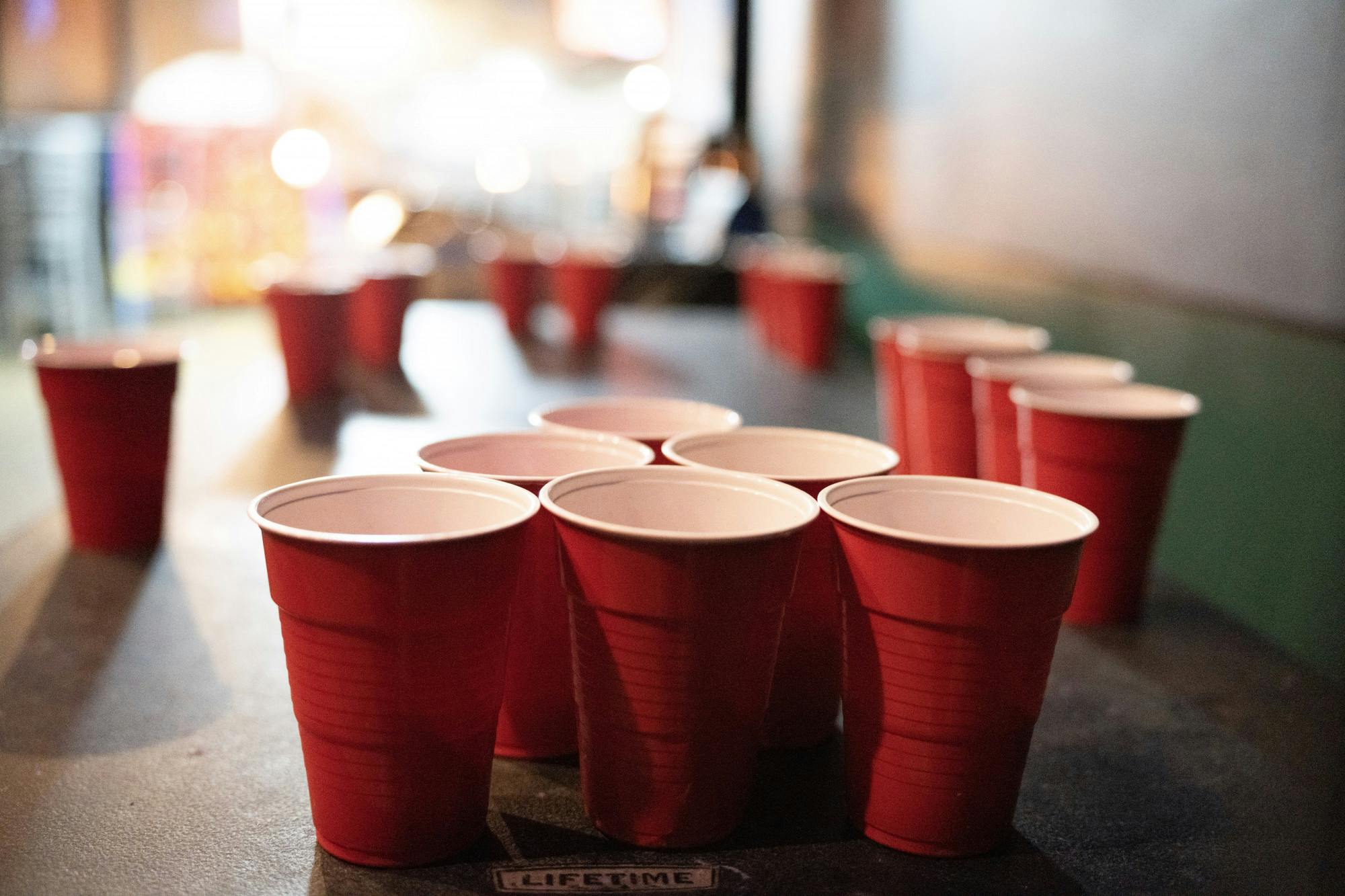It goes something like this: Margarita Monday, Tequila Tuesday, Wine Wednesday, Thirsty Thursday, Friday, Saturday and then repeat.
That is six days of drinking, or at least an opportunity to – one that a number of students choose to take up week after week. Alcohol is deeply rooted in the college culture, especially at Michigan State University, one of the country’s most notorious party schools.
But what does a college student do if they don't drink? And why would a college student not be drinking?
A student might choose not to drink for a multitude of reasons: A history of substance abuse disorder, genetic predisposition, or simply not enjoying it. Whatever the reason, the bottom line is that being sober doesn’t always come with the same level of acceptance that attending Thirsty Thursday does.
Sociology senior Kira Binkowski, who is a student coordinator of MSU's Collegiate Recovery Community, or CRC, knows this all too well. The program aids and supports students in recovery from substance abuse disorder.
“We’ll go out with friends, maybe to a bar, and someone will say, ‘Do you want to drink?’” Binkowski said. “And you say no, and they say ‘Why?’, and it’s just not necessary to ask that question.”
Beyond a posed personal danger, the effects of alcohol consumption on the body often go undiscussed. Alcohol, in any amount, is classified as a class 1 human carcinogen, according to a report by the National Toxicology Program at the U.S. Department of Health and Human Services.
The Center for Disease Control has also reported troubling studies, with heavy drinking linked to an increase in blood pressure, weakening of the immune system and liver damage. For reference, heavy drinking is constituted by four or more drinks; a drink is roughly equal to a 1.5 ounce shot, or 12 ounces of beer.
Despite evidence of real-life harm, the perception is that virtually every college student is indulging in alcohol consumption. A large part of it likely has to do with a sort of cultural stigma surrounding sobriety.
“It’s like 'Oh, that’s what you’re supposed to do in college. You’re supposed to go and get drunk on the weekends,'” Binkowski said. “You see drinking because those are the people that are out and going to the bars ... but you don’t see the people who are inside or hanging out or playing a board game in their basement ... You just don’t see those people.”
It becomes extremely important, Binkowski said, to recognize that a so-called “party school” does not mean exclusively a party school. There are hundreds of niches students find fulfillment in, and only a fraction of them involve drinking and going out.
Currently, a number of students are in the midst of Dry January, a month of abstaining from alcohol. The brief taste of sobriety can be a startling reminder of how a sober lifestyle differs from an established norm, CRC coordinator Dawn Kepler said.
“National research has actually shown that students in recovery are marginalized and underserved on college campuses,” Kepler said. “This is a population of students that are in an environment that can be really challenging to their success.”
A break from alcohol can prompt many different responses. Some may find it challenging, where others find it refreshing and beneficial. Still others will find it a nuisance. Regardless, Dry January can urge students to be critical of their drinking habits and force them to be mindful of how crucial drinking is to their college experience.
For sober students, peer pressure is something that’s capable of making someone break their sobriety.
Psychology sophomore Olivia Feldman said she hasn’t faced too much peer pressure, except from those who aren’t aware of her sobriety.
“I think that when I’m with people that aren’t aware of my sobriety, yes. But (telling people) comes from a place of confidence in my recovery, and it’s a skill that you kind of work towards,” Feldman said.
Being sober can also seem isolating, Kepler said. Communities like the CRC can aid in this feeling.
“One of the biggest risk factors we see with our students when they’re experiencing challenges is isolation,” Kepler said. “Connection is one of the biggest parts of recovery as a college student.”
Students in recovery or even considering recovery can find a community in the CRC to aid and support their journey.
Support student media!
Please consider donating to The State News and help fund the future of journalism.
“I found the CRC and my recovery has never been stronger,” Binkowski said.
As daunting as it may seem to picture a college experience without alcohol, it is, in reality, much more common than students seem to think.
Kepler said the CRC’s recent data showed that 68% of MSU students reported consuming alcohol in the last 30 days.
“So if you flip that, that’s over 30% of students who haven't drank in the last month,” Kepler said. “Almost one in three students. That’s a solid group.”
There are a number of resources available on campus to aid students in their recovery. The CRC hosts weekly events open to anyone and also provides housing for those in recovery. The Alcohol and Other Drug program offers educational sessions for students concerned about their alcohol or drug consumption.
Discussion
Share and discuss “What it's like to be sober at MSU” on social media.







